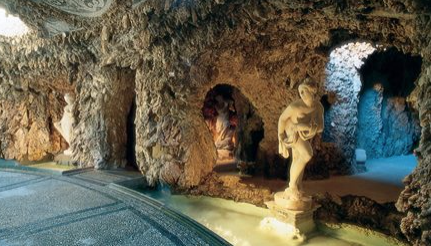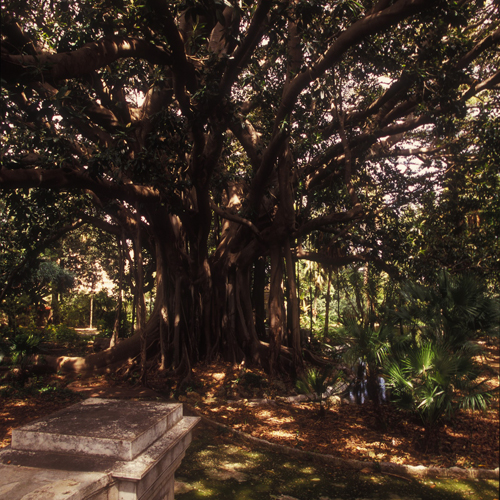Italy's most beautiful Parks and Gardens (ENG)
The network "Italy's Most Beautiful Parks" has chosen the winners of the 2016 competition from among more than 1,000 parks and gardens published in the online guide www.ilparcopiubello.it
Italy is the land of beauty, not only because of the legendary charm of its cities and its artistic and architectural heritage, but also because of its landscape, and in particular its beautiful parks and gardens that dot the "Bel Paese" of aromatic and colored paradises.
"Italy's Most Beautiful Parks" has been selecting the best public and private visitable parks and gardens for over ten years with the aim of promoting nationally and internationally a quality "green tourism," and to increase the interest of the general public to discover this valuable Italian heritage.
These green jewels are indeed among the most beautiful in the world. If you would like to schedule a visit but don't know which destination to choose, then trust the suggestions of the network www.ilparcopiubello.it. With more than 1,000 affiliated parks and gardens, it offers all the necessary information about the most pleasant routes and places to visit.
Each year a panel of academic and professional experts select ten finalists, and then two winners (one private and one public park).
Here are the names of the two most beautiful parks of Italy 2016!
Villa Visconti Borromeo Litta in Lainate (Mailand)
Italy's Most Beautiful Park 2016 in the category Public Parks
Villa Melzi d'Eril in Bellagio (Como)
Italy's Most Beautiful Park 2016 in the category Privat Parks
The area of Villa Borromeo Visconti Litta designed to the garden, about three hectares, was probably beginning divided into four compartments marked by pots of green citrus trees. Its expansion and enlargement stood on the two main axes (north-south, east-west) along which are accomplished considerable and expensive structural works: there is the fountains of Galatea and the foutain of Neptune, the greenhouses with exotic fruits, and the irrigation system and water features have been improved. With the spread, in the 18th century, the transalpine taste for the deciduous trees and with the introduction of hornbeam in Lombardy, the "carpinata" was born. The new interpretation of the classic big hedge in Villa Lainate finds wide application in a long “U” shaped path, made of a double row of hornbeam trees with twisted branches and pruned at once. Over 300 hornbeams were replanted, to give back the park a large gallery over 4 meters high, for about 800 meters in total length. A range of yews, once rigidly pruned like a blunt pyramid, still create the "Theatre of Verzura" natural theater for musical and theatrical performances. The emerging focus on “english garden”, and its great popularity in the early 19th century allows, in 1808, the architect Luigi Canonica, to configurate "new grove" animated by small differences in ground level, with compartments to green trend irregular with prevalence of high trees and bushes. Today there are trees in the Park belonging to 56 different species and shrubs, classified in 15 species. From a rare Ginko Biloba which likely put mansion dates back to 1850-55, with some Atlas Cedars, from Magnolia grandiflore, the oaks, the Bagolari.
Francesco Melzi d’Eril, count of Lodi and Vice president of the First Italian Republic in the time of Napoleon, decided at the beginning of the 19th century to build a summer residence at Bellagio. The Villa Melzi d’Eril was built between 1808 and 1810; Count Melzi’s taste for the neo-classical style came from Napoleonic France and inspired his choice of the architect Giocondo Albertolli. The white columns that flank the landing stage in front of the villa, and the regular succession of the windows enhance the classical style of the house when viewed from the lake.
The park was commissioned to Luigi Canonica and the agronomist Luigi Villoresi, who also laid out the Parco di Monza The axis of the garden extends up the slope from the lake to a high point above the villa. It is crossed by many winding paths. Under the trees, along the shore and at the intersections of the paths, are Egyptian sculptures and Roman statues which add to the romantic atmosphere of the garden. According to the taste of the period lots of exotic trees were planted. Fascinating is the Japanese pond with water lilies, surrounded by Japanese maple trees and cedar trees. In April and May you can admire the blooming of the azaleas and rhododendrons. The present owner is Count Gallarati Scotti.
If Villa Borromeo Visconti Litta and Villa Melzi d’Eril have awoken your interest and curiosity to learn more about the Italian landscape heritage, here are the winners of the previous editions: Garden of Villa Barbarigo at Valsanzibio (Padova - winner 2003), Garden of La Mortella in Ischia (Naples - winner 2004), Gardens of Trauttmansdorff Castle in Merano (Bolzano - winner 2005), Villa d'Este in Tivoli (Rome - 2006 winner ), Isola Bella in Stresa (Verbania - winner 2007), Villa Pisani in Stra (Venice - winner 2008), Royal Palace of Caserta (Caserta - winner 2009), Castle Park Racconigi (Cuneo - winner 2010), Garden of Villa Lante (Viterbo - winner 2011), Vittoriale degli Italiani in Gardone Riviera (Brescia - winner 2012), Parco Giardino Sigurtà (Verona - winner 2016 Privat parks) and Giardino della Villa Medicea di Castello (Florence - winner 2013 Public Parks), Villa San Michele in Capri (Neapel - winner 2014 Privat parks) and Royal Bosco di Capodimonte in Neapel (winner 2014 Public Parks), Giardino di Ninfa in Latina (Rome - winner 2015 Privat parks) and Villa Medici in Rome (winner 2015 Public Parks).
Visit the online guide www.ilparcopiubello.it to learn about all the 1,000 must-see green places in Italy, with visit information, events and much more. You can also follow the news of "Italy's most beautiful parks" on the Facebook and Twitter pages "Il Parco Più Bello".
For more information:
Il Parco più Bello, info@ilparcopiubello.it









 config
config logs
logs 4987.5 KB
4987.5 KB 343 ms
343 ms



